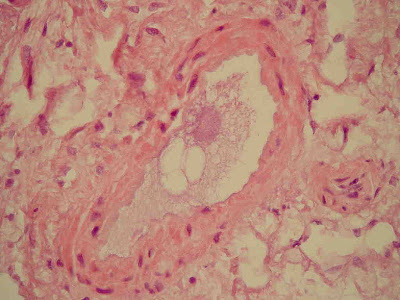What Is a Fat Embolism?

The term “fat embolism” rocked to #1 on Google Trends as the term was used on Fox’s popular television show House during the season finale.
“Yeah, she died from a fat embolism, riding in the ambulance after the amputation. It was unavoidable,” tweeted Saul Nutts. “I don’t even know what that is, but I gotta look it up now.”
“She mostly lived until the end of the episode. Had a fat embolism from the amputation. I can’t believe she would,” tweeted Maria.
What are the causes of a fat embolism?
“Fat emboli can occur whenever there is a chance for fat to enter the circulatory system, such as during surgery or trauma. A common scenario is fatty marrow entering the circulation after a fracture to a large bone such as the femur or pelvis, or after surgery on such a bone,”
Fat emboli can occur whenever there is a chance for fat to enter the circulatory system, such as during surgery or trauma. A common scenario is fatty marrow entering the circulation after a fracture to a large long bone such as the femur or pelvis, or after surgery on such a bone.
It can also occur during childbirth.
Unlike emboli that arise from thrombi (blood clots), fat emboli are small and multiple, and so have widespread effects.
Fat Embolism Syndrome (FES) is distinct from the presence of fat emboli. Symptoms usually occur 1-3 days after the insult, and are predominantly: pulmonary (shortness of breath, hypoxemia), neurological (agitation, delirium, or coma), dermatological (petechial rash), and haematological (anaemia, low platelets). The syndrome manifests more frequently in closed fractures of the pelvis or long bones. The petechial rash, which usually resolves in 5-7 days is said to be pathognomonic of the syndrome; however, it only occurs in 20-50% of cases.
“Yeah, she died from a fat embolism, riding in the ambulance after the amputation. It was unavoidable,” tweeted Saul Nutts. “I don’t even know what that is, but I gotta look it up now.”
“She mostly lived until the end of the episode. Had a fat embolism from the amputation. I can’t believe she would,” tweeted Maria.
What are the causes of a fat embolism?
“Fat emboli can occur whenever there is a chance for fat to enter the circulatory system, such as during surgery or trauma. A common scenario is fatty marrow entering the circulation after a fracture to a large bone such as the femur or pelvis, or after surgery on such a bone,”
Fat emboli can occur whenever there is a chance for fat to enter the circulatory system, such as during surgery or trauma. A common scenario is fatty marrow entering the circulation after a fracture to a large long bone such as the femur or pelvis, or after surgery on such a bone.
It can also occur during childbirth.
Unlike emboli that arise from thrombi (blood clots), fat emboli are small and multiple, and so have widespread effects.
Fat Embolism Syndrome (FES) is distinct from the presence of fat emboli. Symptoms usually occur 1-3 days after the insult, and are predominantly: pulmonary (shortness of breath, hypoxemia), neurological (agitation, delirium, or coma), dermatological (petechial rash), and haematological (anaemia, low platelets). The syndrome manifests more frequently in closed fractures of the pelvis or long bones. The petechial rash, which usually resolves in 5-7 days is said to be pathognomonic of the syndrome; however, it only occurs in 20-50% of cases.
The risk of fat embolism syndrome is thought to be reduced by early immobilization of fractures, especially by early operative correction. There is also some evidence that steroid prophylaxis of high risk patients reduces the incidence. The mortality rate of fat embolism syndrome is approximately 5-15%.











 8:46 PM
8:46 PM
 Goohara |
ป้ายกำกับ:
Goohara |
ป้ายกำกับ:
















0 ความคิดเห็น:
Post a Comment